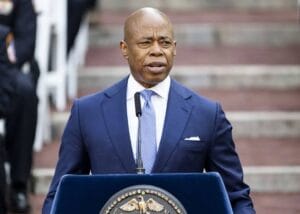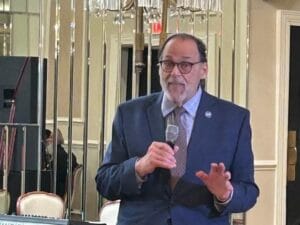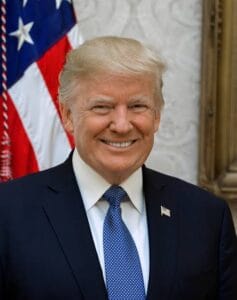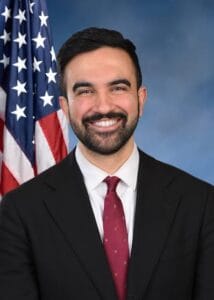Between Fake News and Propaganda in Modern Journalism

Abdulrazaq HamzatCable News Network also known as CNN is today regarded as the poster medium for the propagation of fake news in the world.
This claim was made popular by the US president, Donald Trump who has been alleging CNN of being propagator of fake news since 2016, but more recently, by the Nigerian Government, which accused the international news medium of reporting fake and unsubstantiated figures of alleged casualty in the Lekki incident during EndSars protest against police brutality in Nigeria.
The position CNN found itself became compounded, after it attempted to retract a bogus casualty figure it had earlier reported about the Lekki incident, a development that made the Nigerian Government stance more legitimized.
Additionally, the claim that CNN refused to report the killings and massacre of over 38 police officers and the burning of over 256 police stations equally raised more questions about the intention and credibility of the medium.
However, before the emergence of President Trump in 2016, many African Countries had long maintained that CNN is a purveyor of negative propaganda against the African Continent, a claim recently amplified by Nigeria’s Minister of Information, Lai Muhammed.
In a lengthy petition addressed to Vice President, Communication of CNN, Mr Jonathan Hawkins, Nigeria’s Minister of Information and Culture, Alhaji Lai Muhammed accused CNN of not only being a fake news propagator, he also claimed that CNN report fall short of any known journalistic standard.
Corroborating this position, a Civil Society group, Coalition of Civil Society for Human Rights and Good Governance Africa also accused CNN of using its platform to destabilize African countries, a repeat of which shall not be tolerated in Nigeria. The group cited several alleged incidences of false reports and propaganda from CNN, including but not limited the Arab Spring.
The question arising from all of the above is that, is there any difference between fake news, a recent coinage for fabricated stories and propaganda, a popular tool in mass advocacy, which some people have described as misleading information?
To start with, what is propaganda?
Propaganda is the spreading of ideas, information, or rumor for the purpose of helping or injuring an institution, a cause, or a person. For propaganda, it’s not important whether the information is true or false.
What is important is that the propaganda material can advance the motive of its purveyor. Sometimes, a propaganda content might be true, other times, they may be untrue. Sometimes, they maybe in context, other times, out of context.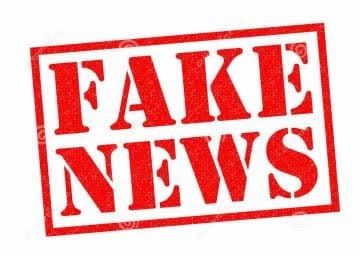 Historically, from the 1790s, the term began being used also to refer to propaganda in secular activities, taking a pejorative or negative connotation in the mid-19th century, when it was used in the political sphere.
Historically, from the 1790s, the term began being used also to refer to propaganda in secular activities, taking a pejorative or negative connotation in the mid-19th century, when it was used in the political sphere.
It is on record that In the beginning of its political utilization, propaganda is often associated with material prepared by governments, but activist groups, companies, religious organizations and the media can also produce propaganda material to advance their interest.
In the twentieth century, the term propaganda has often been associated with a manipulative approach, but propaganda historically was a neutral descriptive term. The first large-scale and organised propagation of government propaganda was occasioned by the outbreak of war in 1914.
After the defeat of Germany in the First World War, military officials such as Erich Ludendorff suggested that British propaganda had been instrumental in their defeat. Adolf Hitler came to echo this view, believing that it had been a primary cause of the collapse of morale and the revolts in the German home front and Navy in 1918.
In Mein Kampf (1925) Hitler expounded his theory of propaganda, which provided a powerful base for his rise to power in 1933. Historian Robert Ensor explains that “Hitler…puts no limit on what can be done by propaganda; people will believe anything, provided they are told it often enough and emphatically enough, and that contradicters are either silenced or smothered in calumny.”
Most propaganda in Nazi Germany was produced by the Ministry of Public Enlightenment and Propaganda under Joseph Goebbels. World War II saw continued use of propaganda as a weapon of war, building on the experience of WWI, by Goebbels and the British Political Warfare Executive, as well as the United States Office of War Information.
In the years following the October Revolution of 1917, the Soviet government sponsored the Russian film industry with the purpose of making propaganda films (e.g. the 1925 film The Battleship Potemkin glorifies Communist ideals.) The 1930s and 1940s, which saw the rise of totalitarian states and the Second World War, are arguably the “Golden Age of Propaganda”. Leni Riefenstahl, a filmmaker working in Nazi Germany, created one of the best-known propaganda movies, Triumph of the Will.In the US, animation became popular, especially for winning over youthful audiences and aiding the U.S. war effort, e.g.,Der Fuehrer’s Face (1942), which ridicules Hitler and advocates the value of freedom.
US war films in the early 1940s were designed to create a patriotic mindset and convince viewers that sacrifices needed to be made to defeat the Axis Powers. The West and the Soviet Union both used propaganda extensively during the Cold War. Both sides used film, television, and radio programming to influence their own citizens, each other, and Third World nations. George Orwell’s novels Animal Farm and Nineteen Eighty-Four are virtual textbooks on the use of propaganda.During the Cuban Revolution, Fidel Castro stressed the importance of propaganda. It was also used extensively by Communist forces in the Vietnam War as means of controlling people’s opinions.
In the early 20th century, the term propaganda was used by the founders of the nascent public relations industry to refer to their people. Literally translated from the Latin gerundiveas “things that must be disseminated”, in some cultures the term is neutral or even positive, while in others the term has acquired a strong negative connotation.In English, propaganda was originally a neutral term for the dissemination of information in favor of any given cause.
During the 20th century, however, the term acquired a thoroughly negative meaning in western countries, representing the intentional dissemination of often false, but certainly “compelling” claims to support or justify political actions or ideologies.
The public’s discovery of propaganda has led to a great of lamentation over it. Propaganda has become an epithet of contempt and hate, and the propagandists have sought protective coloration in such names as ‘public relations council,’ ‘specialist in public education,’ ‘public relations adviser.’
In 1949, political science professor Dayton David McKean wrote, “After World War I the word came to be applied to ‘what you don’t like of the other fellow’s publicity,’ as Edward L. Bernays said….”Identifying propaganda has always been a problem. The main difficulties have involved differentiating propaganda from other types of persuasion, and avoiding a biased approach.The propagandist seeks to change the way people understand an issue or situation for the purpose of changing their actions and expectations in ways that are desirable to the interest group.
Propaganda, in this sense, serves as a corollary to censorship in which the same purpose is achieved, not by filling people’s minds with approved information, but by preventing people from being confronted with opposing points of view.
What sets propaganda apart from other forms of advocacy is the willingness of the propagandist to change people’s understanding through deception and confusion rather than persuasion and understanding. The leaders of an organization know the information to be one sided or untrue, but this may not be true for the rank and file members who help to disseminate the propaganda.
Unlike propaganda, a lie is an assertion that is believed to be false, typically used with the purpose of deceiving someone. The practice of communicating lies is called lying, and a person who communicates a lie may be termed a liar. Lies may serve a variety of instrumental, interpersonal, or psychological functions for the individuals who use them.
Generally, the term “lie” carries a negative connotation, and depending on the context a person who communicates a lie may be subject to social, legal, religious, or criminal sanctions.However, fake news is a type of yellow journalism or propaganda that consists of deliberate disinformation or hoaxes spread via traditional print and broadcast news media or online social media. The false information is often caused by reporters paying sources for stories, an unethical practice called checkbook journalism.
The news is then often reverberated as misinformation in social media, but occasionally finds its way to the mainstream media as well.
Fake news is written and published usually with the intent to mislead in order to damage an agency, entity, or person, and/or gain financially or politically, often using sensationalist, dishonest, or outright fabricated headlines to increase readership.
Similarly, clickbait stories and headlines earn advertising revenue from this activity.Reports have it that the relevance of fake news has increased in post-truth politics.For media outlets, the ability to attract viewers to their websites is necessary to generate online advertising revenue. If publishing a story with false content attracts users, this benefits advertisers and improves ratings. Easy access to online advertisement revenue, increased political polarization, and the popularity of social media, primarily the Facebook News Feed,[1] have all been implicated in the spread of fake news, which competes with legitimate news stories. Hostile government actors have also been implicated in generating and propagating fake news, particularly during elections.In Kwara State Nigeria, where a 5 decades old Saraki dynasty was dethroned in 2019 election, Nigeria’s former senate President, Dr Bukola Saraki who was defeated in the election by sitting Governor Abdulrahman Abdulrazaq through the popular otoge political revolution claimed that his inherited dynasty was dethroned with the aide of propaganda.
However, in an article by a leading Pro-Democracy group in Kwara State, Kwara Must Change, titled ‘’Propaganda made and unmade Saraki’’, it was argued that, though media has the capacity to paint evil as good and good as evil.
The organization noted however that, if media paint an evil person good, it could also repaint the person to his or her original self-using propaganda. Unfortunately, fake news cannot be reversed, once circulated and no amount of retraction can undo the damage of fake news.
Abdulrazaq Hamzat writes from Abuja, Nigeria. He can be reached at Discus4now@gmail.com





